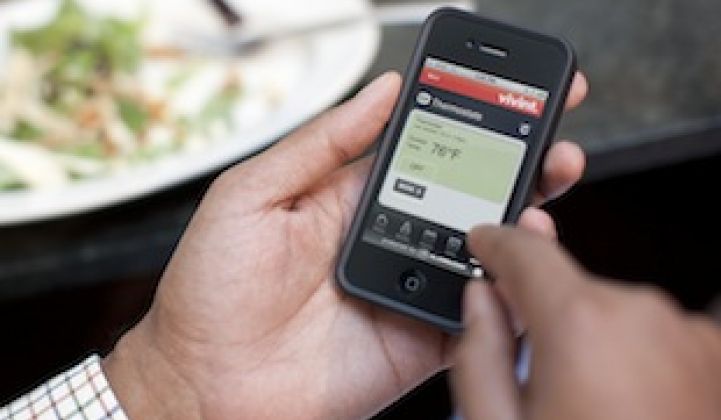For a security company like Vivint trying to branch out into the connected home, the competitive landscape continues to change.
Yesterday's competitors were traditional security companies like ADT. But as various residential service providers break out of their silos and attempt to network everything in a home, today's competitors could be cable providers like Comcast and Time Warner. Tomorrow's competitors will be up-and-coming efficiency companies like Nest and Opower.
And what about consumer technology leaders like Apple, Google and Microsoft?
"They'll definitely be competitors if they decide to get back into it in a much more serious way. But early attempts from Google and Microsoft failed to create a business model," said Jeremy Warren, vice president of innovation at Vivint, in an interview.
GTM has documented the flashy entrance and quiet demise of Google and Microsoft (and many other lesser-known companies) in the home energy management space. These first-movers created dashboarding tools and hardware working independently from other systems in the home, thus requiring a new technology commitment from consumers for comparatively little energy savings. Despite the branding from big-name tech companies, the customers did not materialize.
In 2010, Apple filed patents for a technology that would turn electrical sockets into internet ports. The company hasn't done anything publicly on the home energy management front since then, but many expect it will eventually jump into the market in some way.
But having the flashiest technology isn't necessarily the winning model. It's relatively easy to create a high-end dashboard that connects to a smart thermostat. But that doesn't matter if a company can't find the right customer-acquisition channel to get users to actually engage with it.
That's why home security firms like Vivint (and now cable companies) think they already have the right business strategy to support energy management services.
"The home security industry has a business model that facilitates the adoption of other services," said Warren.
As one of the top home security companies, Vivint has 675,000 customers in North America who are already using their smart phones to monitor their homes. This makes it easier to convince customers to take on new services as part of a similar existing service.
"Most people aren't going to be willing to pay extra money per month just to get a breakdown of their energy consumption. You have to combine these services together," said Warren.
In the two years since Vivint started offering home energy management, 54 percent of customers have adopted the service.
Warren also thinks the company's business model supports wider customer adoption than a firm like Nest, which relies mostly on do-it-yourselfers to install a smart thermostat.
"We don’t see DIY taking off. Ease-of-use is good, but it comes back to the structure that allows you to acquire a lot more customers," he said.
But with Nest shipping tens of thousands of smart thermostats per month and moving deeper into residential demand response, so far it appears that company is a formidable competitor in the burgeoning home energy management space.
So where does Vivint see the technology going?
Like Nest, which has banked heavily on a self-managing thermostat, Vivint sees direct local control getting phased out in favor of smart automation.
"It's one thing to tell the system you're going on vacation," said Warren. "It's another thing to have the system reach out to you and say, 'It looks like you're on vacation -- would you like me to change your thermostat for you?'"
Vivint plans to roll out new functionality in the next year that will make its system more automated and predictive. Of course, there's a fine balance between making a homeowner feel comfortable with a system's predictions and making them feel like the system is intrusive, particularly when it controls the entire home and not just a thermostat.
Those are potential kinks that the company will need to sort out. But for now, Vivint's customer acquisition strategy is just as important as the technology itself.
"It’s about a business model that makes it easy to bring customers on board. We want to make sure we have an entire model that makes sense and is not just interesting," said Warren.



